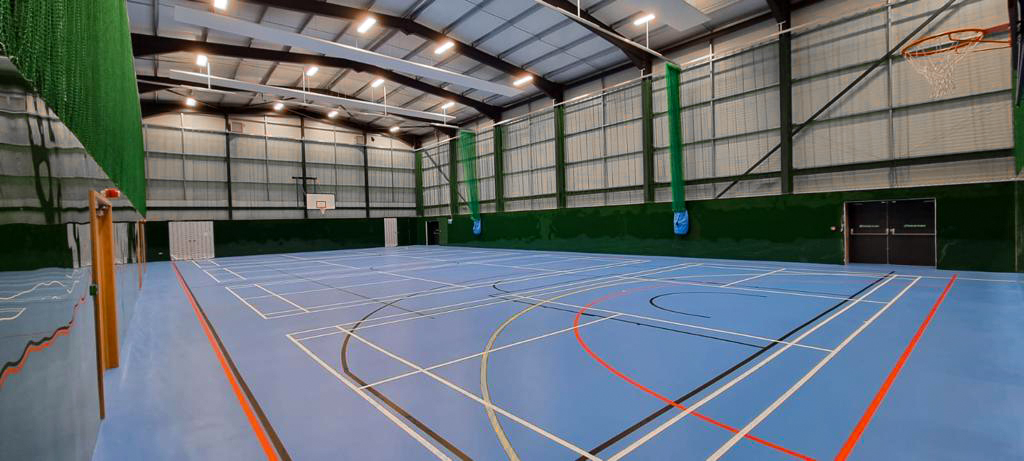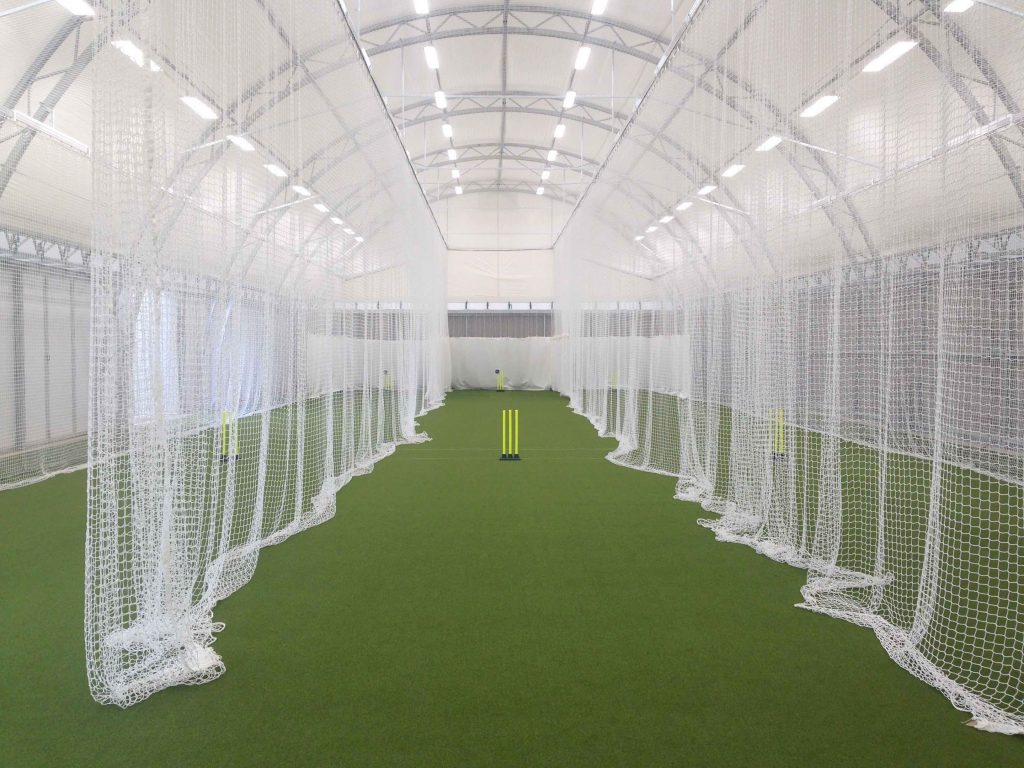Research carried out by the Department for Education has demonstrated that the school holidays can be pressure points for some families. Children from low-income households in particular are less likely to have access to organised out-of-school activities. They are more likely to experience ‘unhealthy holidays’ in terms of their physical wellbeing as well as social isolation, which inevitably has a negative impact on their mental wellbeing.
It is therefore encouraging to read the Government’s School Sport and Activity Action Plan paper which highlights the importance of supporting schools to make best use of their facilities and provide more opportunities for children to participate in sport outside of school.

The sports hall at Welland Park Academy is home to the Market Harborough badminton club.
£57m worth of funding (available until March 2025) is available to support up to 1,350 schools to open their sport facilities to the public beyond their usual operating hours.
This is especially interesting to us as we work with a lot of schools and have had many conversations with them about the benefits of investing in their sporting facilities, not just to enhance their physical education programme but to raise their profile and presence in the local community by becoming a beacon for healthy living.
At a time when public health is in the spotlight, people are looking for more ways to stay fit and healthy but according to UK Active, 43% of people surveyed said that the cost-of-living crisis has discouraged them from using local leisure facilities because membership is so expensive.
39% of all sporting facilities are behind the school gates and many of these cease to operate at the end of the school day. If more schools were to open up their facilities at reasonably priced hire costs, this would give these 43% an alternative, more affordable option for keeping active and therefore help to boost the welfare of communities as well as promote a more cohesive society.

The indoor nets at Kings College, Taunton are a hub for cricket training at a local and national level throughout the year.
Multi-sport facilities that can accommodate a wide range of activities can also encourage the development of local and national teams who need a home so they can thrive. In fact, we are currently working on a project with Cefn Hengoed Community School in Swansea who have partnered with the Welsh FA and the Welsh RFU to build a multi-sports facility that will benefit pupils but also become a centre for football and rugby training when school is closed.
The netball dome we installed at Dorcan Academy is used by the Swindon & District national League when school has finished. The sports hall at Welland Park Academy is home to the Market Harborough badminton club. The indoor nets at Kings College, Taunton are a hub for the provision of cricket training at a local and national level throughout the year.
Out of school hours, these sports halls and pitches help to nurture home-grown talent and introduce more people of all ages and abilities to different sports that they may not otherwise have access to – people with disabilities and those who are vulnerable, the young and the elderly who may prefer the comfort of an indoor facility and girls too who might feel safer in a sheltered environment.
With many barriers both visible and invisible to sport and fitness, school sports facilities are safe, inclusive spaces for everyone.
Schools that willingly opening their doors to the community demonstrate their commitment to active living and understanding of the role they play in shaping society, which helps to enhance their reputation.
There are of course also the financial benefits. This model of operation can provide a vital new income stream for schools that enables them to invest further in updating and improving other areas of school life. In turn, this will ensure they continue to attract the best teaching staff and remain competitive when it comes to attracting students.
It really does pay to invest in school sports facilities.
